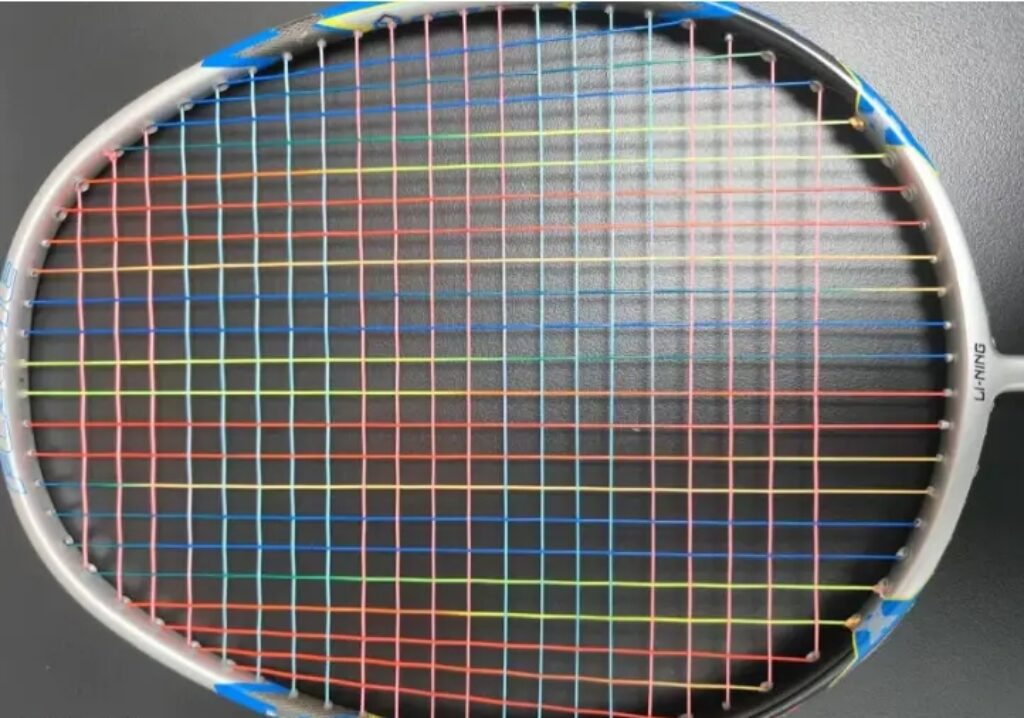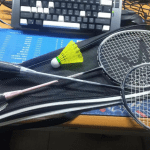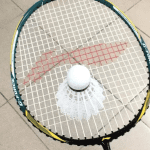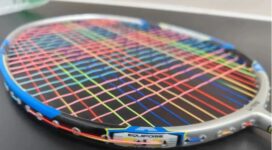
Badminton Racket Lining N50II S-type Reviews
Parameters: 3UG5, no bottom, total weight 91.68g in used condition, balance point 302mm, shaft length 220mm, medium hardness, box-shaped frame, 72-hole string bed, 9-3 o’clock string groove, warranty 30 pounds, string tension 26-28lbs BS720.
The main color choices for Li Ning at that time were silver, gold, and red. When the N553 was released, the visual effect was indeed impressive, though that’s another story. The racket features a silver-gray paired with navy blue on the wings, and the shaft is a black background with the racket model and technology, including a transition to blue at the cone cap—an overall standard presentation. However, the black string grooves on the outer wings of the frame and various technology markings inside the frame enhance the visual appeal from a side angle, effectively improving the user’s experience.

Players who previously used the N502S were top-tier, including Wang Lin, Bao Ge, and Yu Yang, which secured a solid price for this racket in the second-hand market. Additionally, as a Fire series product emphasizing attacking ability, it has the ‘S’ suffix denoting speed, indicating it is more suitable for doubles play.
However, upon actual use, it turns out that’s not entirely the case. The racket’s swing weight is quite noticeable, and the frame’s air resistance is high, resulting in a slower swing speed. With its long middle shaft and medium hardness, the N502S might not produce continuity in my hands.
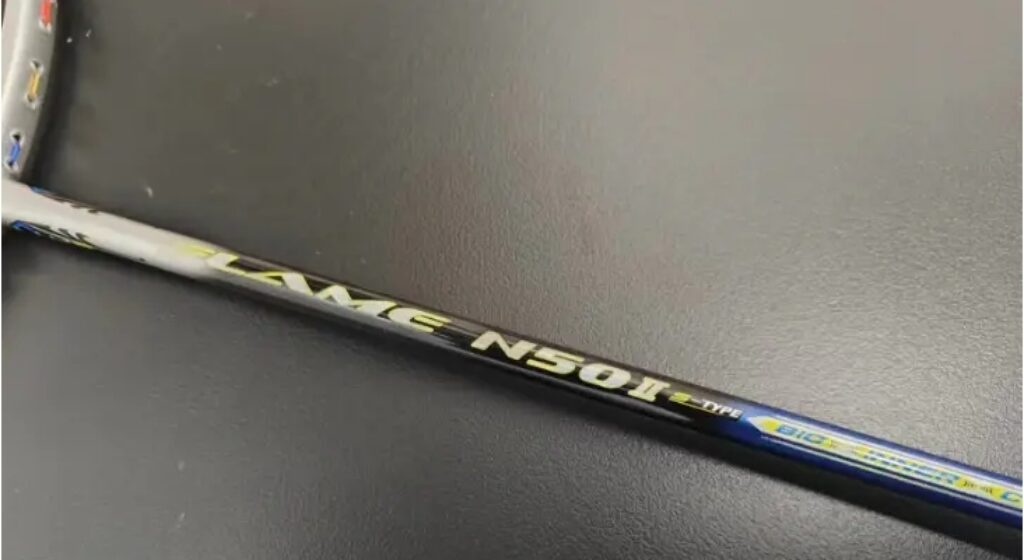
Apart from being somewhat heavy, there are no other difficult aspects to adapt to. It can easily generate power in high clear shots. However, the old Li Ning’s elasticity is rather average, with a low feedback between the racket and the shuttle. The racket feels somewhat wooden, and my sensitivity to the shaft’s bending is somewhat lacking.
The style of rackets tested on the same day was varied, and switching to the N502S required more adaptation time, especially in terms of power generation and hitting point judgment. Initially, the racket’s long drawing time and slow swing speed were quite uncomfortable. After consulting with the racket owner, who described it as light and fast, I realized what was happening. It turned out to be a tool for power players. After acknowledging this shortcoming and adjusting my mindset, I adapted to it while playing mixed doubles.
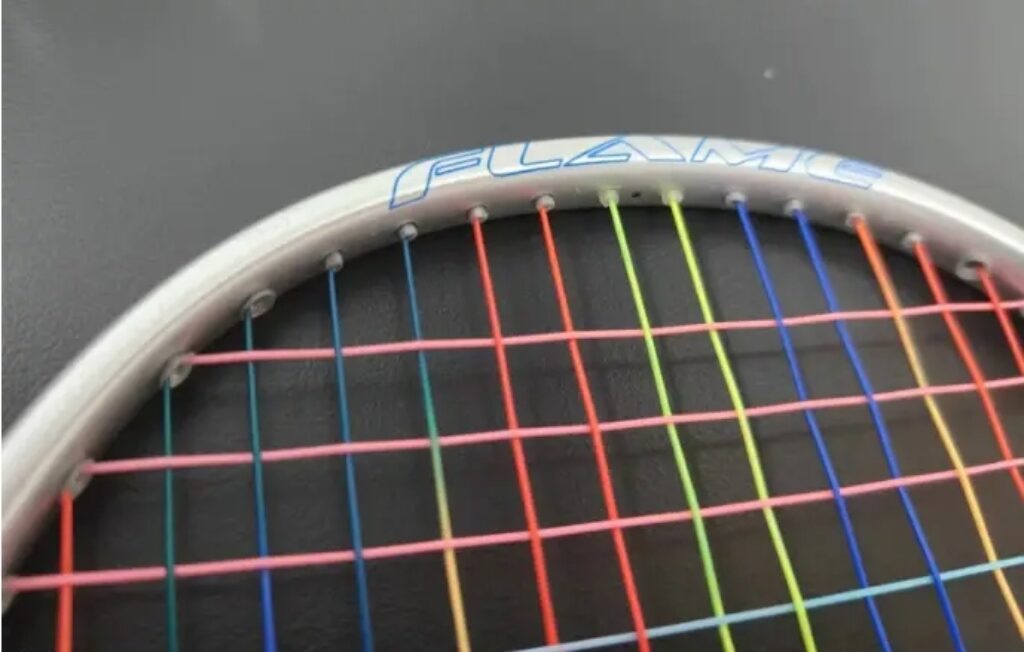
Many might appreciate the N502S for its performance in attacks. It is a racket that feels capable of delivering powerful smashes due to its swing weight. For players with substantial strength, simply using it to smash is enough to trouble opponents. However, the N502S feels a bit rough, even compared to the later N903, largely because the power comes more from the racket’s kinetic energy rather than its elastic potential. Additionally, while the sweet spot is large, it lacks focus.
Moreover, can every player ensure they are positioned early and fully exerting force while using it? Because of the longer preparation time for power, moving quickly to the hitting point is essential, and failure to do so may result in poor shot quality.
Even after adapting, I still struggle with the feel of the racket’s short, quick shots. It lacks flexibility, and the short power feedback is unsatisfactory. I hoped that after hitting the sweet spot, the racket head would quickly return the shuttle, but the N502S’s face feels sticky, and the shaft’s recovery speed is slow. In fast-paced exchanges, I quickly found myself at a disadvantage, often only managing to block the shuttle.
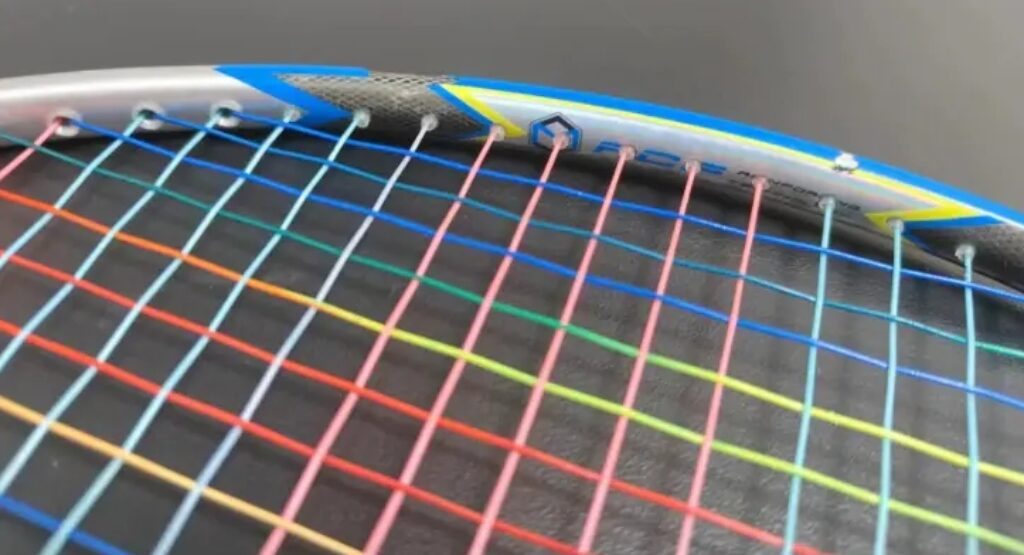
If I must highlight a point of praise, it’s that the N502S provides very stable shot output. Whether in long shots or small ones, the feel is solid. Sometimes, when not in position for a backcourt shot or transitioning from the net, the quality of control is still good, with fewer vulnerabilities. Additionally, in active situations, I find it challenging to adapt to the racket’s feedback for powerful smashes. This racket seems to excel in exploiting opponents’ weaknesses, as a few times I saw the shuttle drop straight into the court while opponents could only watch.
Unless there is a different tuning for player versions, I’m puzzled as to why it is used in fast-paced games. Its heaviness, large and slow drawing action, and inadequate shock absorption mean each shot has a significant interval, and the racket takes time to recover from deformation. If you are slightly forward in position, it becomes very difficult to deal with opponents’ smashes effectively. If struck at the armpit or other weak positions, it is even more likely to lose points.
